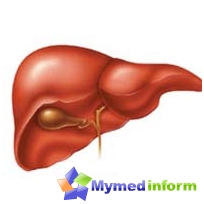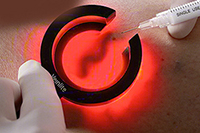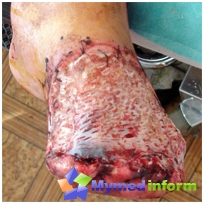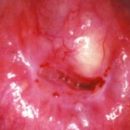The liver abscess is a secondary state that arises as a complication of the main disease. In the clinical picture of the disease, chills appear, sweating, nausea, decreases appetite. The main treatment is surgical.
Content
The concept of liver abscess
Liver abscesses after widespread antibiotic therapy have become a rare disease. Liver abscess arise as a result of upward biliary infection; hematogenous distribution of infection on the portal venous system or through the hepatic artery during sepsis; direct distribution of infection in inflammatory diseases of the abdominal organs; Liver injuries. In most cases, liver abscesses are a complication of severe, more often purulent, cholangitis, which occurs with bile sickness or cancer of extrahepatic bile ducts. Other reasons are sepsis, pylephlebit, which can be a complication of destructive appendicitis, diverticulitis of the colon, nonspecific ulcerative colitis.
Pyiogenic abscesses can be solid, but more often there are multiple. Single abscess is more often located in the right.
Bacterial flora in abscess is found in about 50% of cases. In sepsis, golden staphylococcus, hemolytic streptococcus, is often sown, with biliary abscesses, an intestinal wand or mixed flora is often found. In recent years, a lot of attention is paid to anaerobic flora, which can be found only when sowing a piece of ad hoc.
Basic symptoms of the disease
Liver abscess is always a secondary disease. Against the background of clinical manifestations of the underlying disease, the temperature acquires an intermitting or hectic character, chills appear, sweating, nausea, decreases appetite.Pain is a late symptom and more often occurs during single large abscesses. Often the liver increases and the pain of its edge appears during palpation. Sometimes there is a skin and scler. In the blood test - high leukocytosis with a shift of the formula to the left, anemia. Under blood sowing, the causative agent of the disease is detected at about 30%, more often in abscesses of septic origin. With overview radioscopy of the organs of the abdominal cavity, high standing and limiting the mobility of the right dome of the diaphragm are found, the fluid is possible in the pleural sine. With a gas-forming flora against the background of the liver shadow, the fluid level can be determined, sometimes the deformation of the top contour of the liver can be detected. The diagnosis helps ultrasound examination of the liver, computer x-ray tomography, angiography, and liver scan with technetium-99.
Treatment of liver abscess
 Antibiotic therapy according to microflora sensitivity. To create a greater concentration of antibiotic in the liver, it is possible to introduce a catheter into a hepatic artery or an umbilical vein after its selection and tool bunning for dilatation. With single large or several large abscesses, surgical treatment is shown - the opening and drainage of the um. The most gentle and at the same time, the effective method of treatment (especially with multiple abscesses) is the percutaneous drainage of the ulcene under the control of a computed tomograph or an ultrasonic scanner.
Antibiotic therapy according to microflora sensitivity. To create a greater concentration of antibiotic in the liver, it is possible to introduce a catheter into a hepatic artery or an umbilical vein after its selection and tool bunning for dilatation. With single large or several large abscesses, surgical treatment is shown - the opening and drainage of the um. The most gentle and at the same time, the effective method of treatment (especially with multiple abscesses) is the percutaneous drainage of the ulcene under the control of a computed tomograph or an ultrasonic scanner.
Complications:
- sepsis
- Subadiaphragmal abscess
- Abrasion breakthrough into free abdominal or pleural cavity
- Empiama pleura
- purulent pericarditis
The forecast is always very serious. With single large abscesses in case of timely drainage, up to 90% of patients are recovered. Multiple abscesses and unfamiliated single almost always lead to death.









